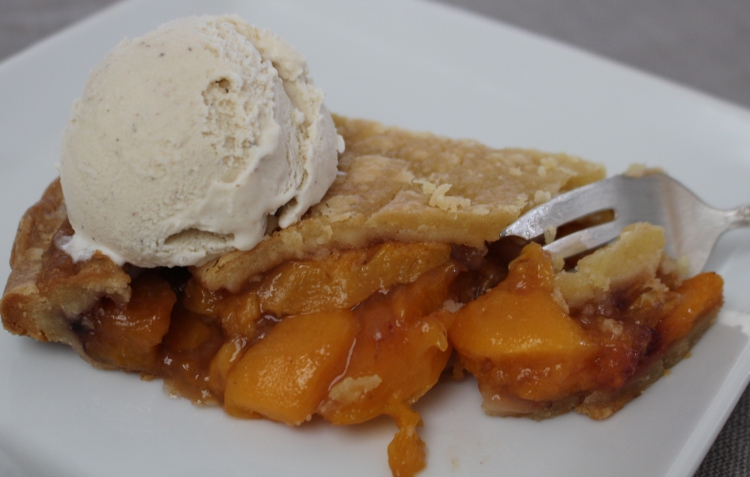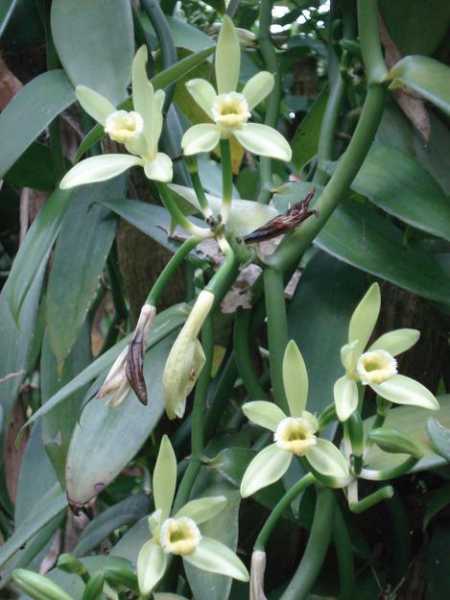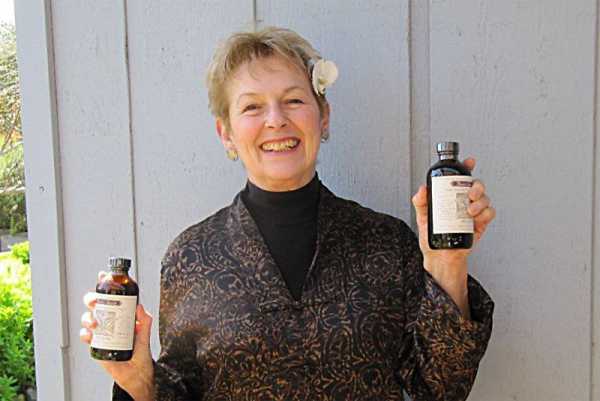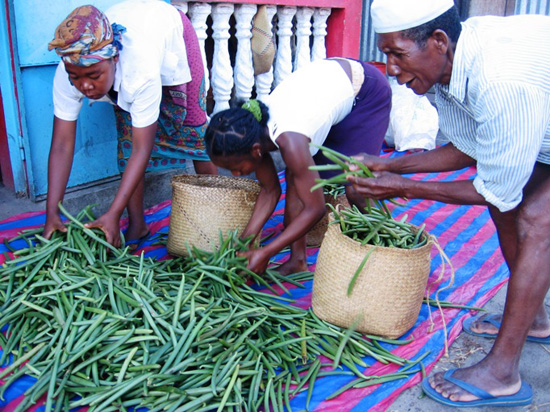
I'm amazed at how superior your vanilla is!
– Des, The Grommet

Frustrating? You bet, especially as we enter the autumn baking season and the holidays.
So why are the prices climbing and where can you find cheap vanilla? It turns out the answer is complicated.
Nearly everything we purchase is priced according to supply and demand, and this is especially true with food. Whereas clothing, washing machines, cars and other man-made goods typically are pretty consistently available, agricultural products are subject to weather patterns, pests, pathogens and even human manipulation.
Because we live in a global economy, if there’s a wheat shortage due to bad weather in our Midwest, our government can buy wheat from another country. Prices will go up, but bakeries won’t shut down and flour will still be on market shelves. The same is true with last year’s egg shortage. Avian Flu decimated many commercial egg producing facilities but only in some regions. We could still find eggs at the market, but we paid dearly for them. Now, almost a year later, there is a glut of eggs again.
When it comes to vanilla, it’s a lot more challenging. Until the 1870s nearly all vanilla beans came from Mexico and it wasn’t cheap. If the crop failed due to cold or drought, the salvageable vanilla sold for exorbitant prices; mostly, everyone did without. By the 1890s large vanilla plantations had been developed in the Indian Ocean countries of Madagascar, Reunion and the Comoro Islands, The majority of the Indian Ocean vanilla (known as Bourbon vanilla) went to Europe, but at least there was now a backup if Mexico’s crop fell through.
By mid-twentieth century, Mexico’s production had dropped to only a fraction of its original size, and Madagascar was the leading source of vanilla beans worldwide. Indonesia, Tahiti and, to a lesser degree, other tropical countries, also produced vanilla. Because vanilla is the world’s most labor-intensive crop, vanilla beans have never been cheap, but with a ready supply, it is usually affordable – except when it isn’t.
Shortages due to typhoons, cyclones, droughts, earthquakes, or political instability occur roughly every five to ten years. Disasters are a boon for those whose crops survived and for farmers worldwide who have a ready supply of beans. And every time a shortage occurs, vanilla farmers everywhere hope to benefit from the higher prices so they either ramp up production or plant new vines. Within three years there will be a glut of beans on the market and prices will again drop. When crop prices stay low for three or more years, farmers will tear up their crops and plant something else until another crisis occurs.
At the beginning of the 21st century, a combination of cyclones and other weather-related issues. along with extended low prices, caused a major vanilla shortage. It quickly became the worst vanilla shortage ever. Between late 2001 and 2004, prices for cured, dried, vanilla beans went from a low of $20 a kilo to over $500 a kilo at source!
A lot of farmers benefited from the shortage but it also became incredibly dangerous. In fact, for a brief period, it was like the drug wars. There were inspection stations with guards watchful for stolen beans, helicopters hovered over plantations, and people were robbed and murdered. The biggest winners were the middlemen and any companies with a stockpile of beans that were purchased before the prices sky-rocketed.
Once again, farmers (and speculators with farmland available) worldwide learned of the shortage and started growing lots of vanilla. At the beginning of 2005, prices unexpectedly collapsed. Even some of the seasoned traders were caught off-guard and left with tons of very expensive vanilla beans. Other factors were also at play at this time that changed the game for pure vanilla, and not for the better.
While coffee, chocolate and vanilla all have similar characteristics – they’re labor-intensive luxury crops all grown in similar locations, all valuable and all subject to tropical storms – only vanilla has viable imitations. Whereas coffee is traded in excess of 10 million containers annually and cacao sells more than 5 million containers, only 2300 metric tons of vanilla beans come to market during a good year. And, although vanilla was traded on the commodities market when Mexico was the only major producer, that ended nearly a century ago.
As early as the 1890s a terrible imitation vanilla made from a component of clove oil came on the market. Another strange and long-popular imitation was made from coal tar. In the late 1920s, a better imitation vanilla was created from the effluent of paper pulp. Ponderosa pine contains natural vanillin (the flavor is in the wood pulp). While it doesn’t taste the same as pure vanilla, it was good enough to sell as a cheap substitute. Commercial cookies and cakes dessert industries used the imitation vanilla in their low-cost products and the frozen dessert and dairy industries used it as well.
In the 1960s and 70s McCormick and Company pushed through Standards of Identity legislation that required all dairy and frozen dessert products containing vanilla to be labeled as pure or imitation vanilla. The laws came about because so many companies claimed their products contained pure vanilla when they actually were made with imitation.
In 2003, not quite two years after the crisis began, a large flavor company announced it had created a new class of imitation vanilla from wheat germ extract and the quality of this product was significantly better than other imitations. Most of the large corporations producing frozen desserts or dairy products switched to this new imitation, and many of them didn’t return to using pure vanilla when the prices collapsed. Instead of labeling their products as containing imitation vanilla, they use the euphemism, “other natural flavors.” Because the FDA is underfunded and focused on bigger issues, these companies have gone unchallenged.
In 2014 the first flavor made from DNA created on a 3D printer, along with highly genetically-engineered yeast, came into the marketplace. Guess what the flavor is? That’s right – Vanilla! And just as the men who developed the earlier imitations claimed, the producer of this latest iteration commented, “It probably won’t affect the vanilla farmers.” The rationale for why it won’t affect them was not addressed.
In the past when a typhoon, drought or unusual cold spell destroyed the vanilla crop, it was blamed on the quirks of nature. Unfortunately, climate change is now very much a reality throughout the Equatorial Belt, and it isn’t just vanilla that’s suffering. Areas that had abundant rainfall now have too much or not enough. Temperatures are rising; if there’s a lack of forest cover, the humidity has dropped precipitously. Drought in some regions is now commonplace.
The 2015 El Nino phenomenon started strong and continues to grow stronger. The cacao crop in Cote d’ Ivoire was destroyed as incessant rains knocked blossoms off the trees. Indonesia is experiencing drought, impacting coffee, cacao and vanilla. In East Africa, heavy, constant rainfall has impacted vanilla, coffee and cacao. Although we don’t know at this point how climate change will play out long-term, it doesn’t bode well for tropical commodities or for the people who grow them.
As if all of the above weren’t enough, the greed factor plays a big role in agriculture, especially in the tropics. Three years ago, when vanilla prices began to climb, it was due, in part, because speculators who experienced a bumper black pepper crop purchased vanilla beans and held them off the market to force up prices. This is a very effective practice as vanilla beans when properly stored do not lose their flavor and fragrance profiles for years.
Pollination for the 2015 northern Madagascar crop was very poor. The beans will be ready in November, but they were pre-purchased by late spring. There was a major shortage of extract grade beans, a serious concern for flavor manufacturers. Panic buying began as soon as word was out that the 2015 crop would be short. Within weeks, all the beans from northern Madagascar, the traditional vanilla growing region, were sold. However, vanilla is now grown in southern Madagascar as well, and there, the 2015 pollination was excellent.
Speculators, wealthy from illegal rosewood sales, swarmed to the south in private airplanes literally filled with cash, and purchased the green beans at higher than market prices. Smaller traders who focus on fair-trade conditions for farmers couldn’t begin to compete.
For now, any traders who run short on beans for extract production will pay a painfully high price for beans and you will feel it at the market. As for the farmers? The majority sell their green beans to middlemen who process the beans and then sell the beans to speculators or traders. This year some vanilla farmers have made money. Seeing the influx of cash in these desperately poor countries will encourage other farmers to plant vanilla again or plant more. The cycle of supply and demand continues but with fewer corporate buyers of pure vanilla as they instead purchase and use “other natural flavors.”
There is still relatively cheap vanilla extract available, especially in big-box stores. Just be aware that the quality will be poor, as it is made from the cheapest beans possible, beans that have a low flavor profile and minimal natural oils. These extracts will contain higher proportions of corn syrup or sugar to boost the aroma but they will provide little – if any – flavor in your food.
Although higher prices for quality vanilla can be a significant challenge for the small artisan food producers, for those of us who use vanilla in home baking and cooking, it’s important to keep in mind that we don’t use vanilla in cups, but in teaspoons and tablespoons. The cost may stretch our budgets some, but the higher prices mean that the families whose farms are currently producing vanilla, may have a little more to eat or new shoes or the children can even attend school. It also means that you have taken a stand for saving pure, natural vanilla from disappearing altogether.
That helps to put the picture into perspective a little better, doesn’t it?
At The Vanilla Company we are doing our best to keep the best available vanilla beans, extracts and other products in stock during the crisis. By paying farmers a fair price and encouraging the use of pure vanilla, we are doing what we can to help farmers continue to grow this remarkable tropical rain forest flavor.
Here at the Vanilla Company, our mission is to provide our customers with premium-quality vanilla extracts and excellent customer service. Our vanilla extracts contain vanilla beans with a high vanillin content. They are made with 20% more vanilla beans than required by law. This gives our extracts an excellent depth of flavor that is so strikingly noticeable that it is not uncommon for us to get reviews like the one below.
We use sugar cane alcohol, vanilla bean extractives and distilled water. Period! All of our vanilla products are gluten-free.
I was given a small bottle of Rain’s Choice in a gift basket and I have been hooked ever since. The flavor makes all of my baking so much better! I will never use grocery store vanilla again!


© 2021. All Rights Reserved
Designed/Developed by Kat & Mouse
2 Responses
Thanks for your informative article. I will no longer forego buying pure vanilla at high prices. I will see the price I pay as a contribution to a better life for the farmers and their families.
Hello. Thanks for the information. YES, buyer beware. It is important to do your homework. Learn about Mexican vanilla. Research it. I personally infuse my own vanilla extract with beans I purchase whilst in Mexico. I do not trust “the middleman”, their agenda is profits, usually at expense of quality. Yes, there is still high quality vanilla extract to be found in Mexico, but one must seek it out. (Like discovering all good things in life, seek and ye shall find.) LEARN what real vanilla looks like, tastes like…compare the real thing to the fake, establish a point of reference. Yes, this takes time and effort, but knowledge is power. If you want to know about something, go find out about that something for yourself. Best of luck. Adios